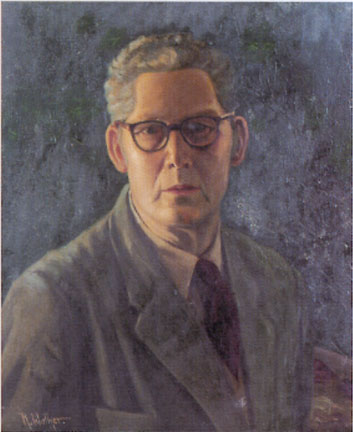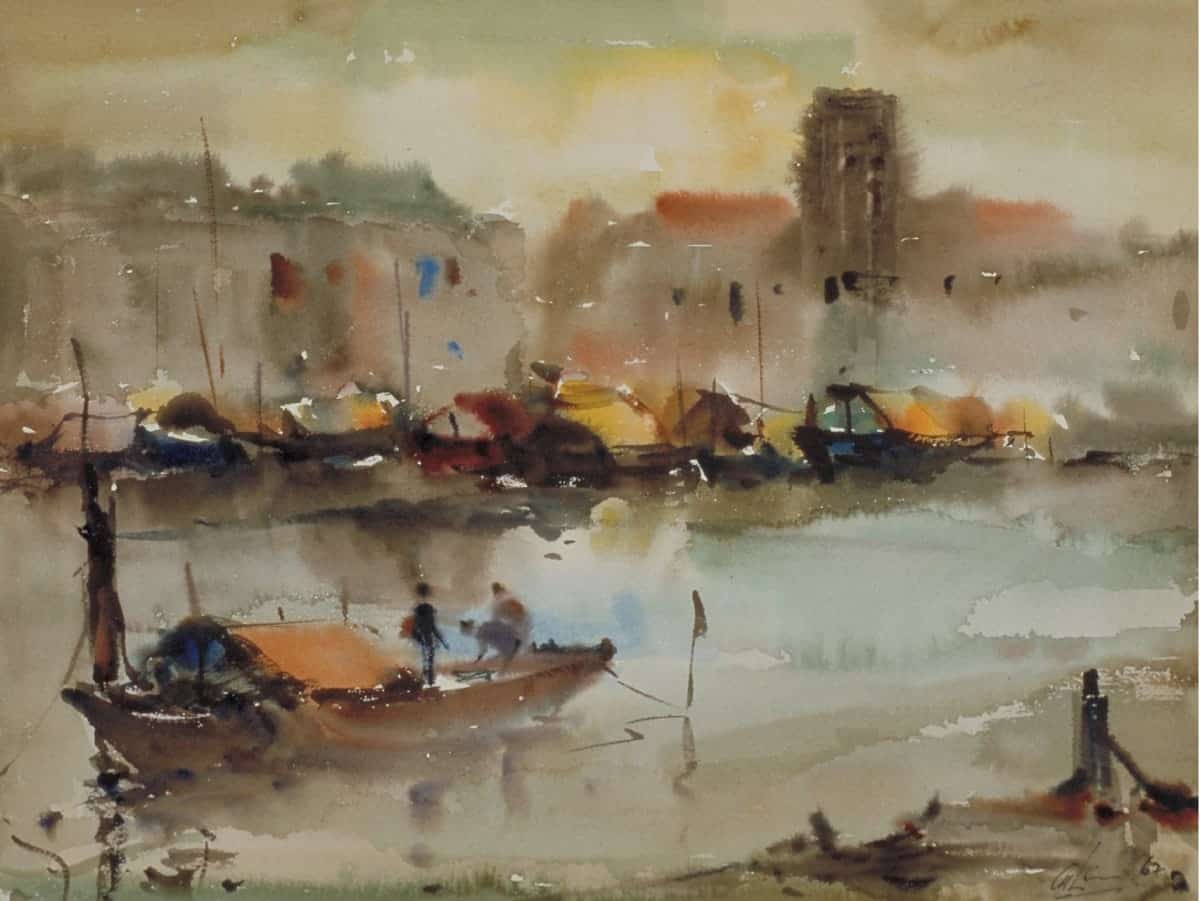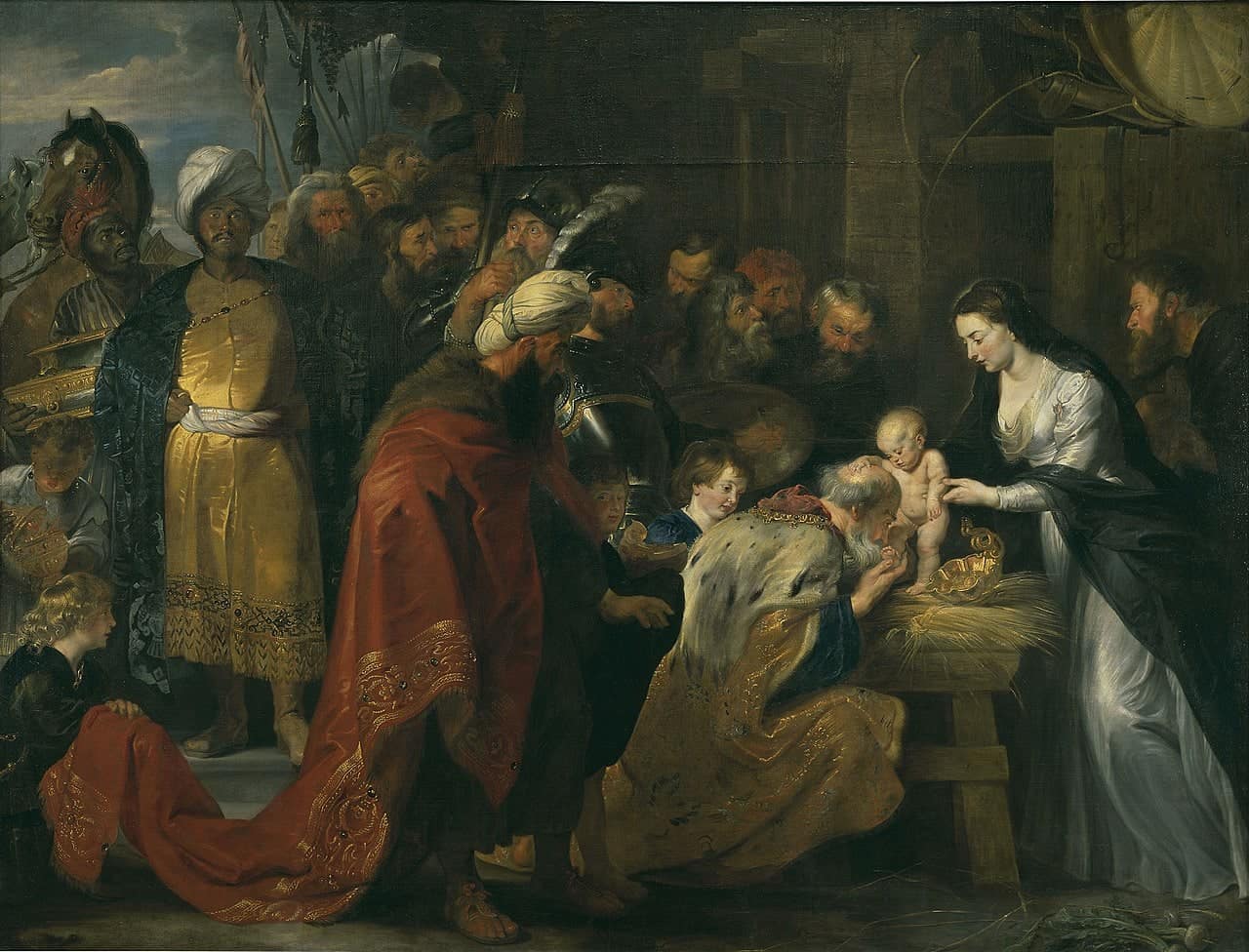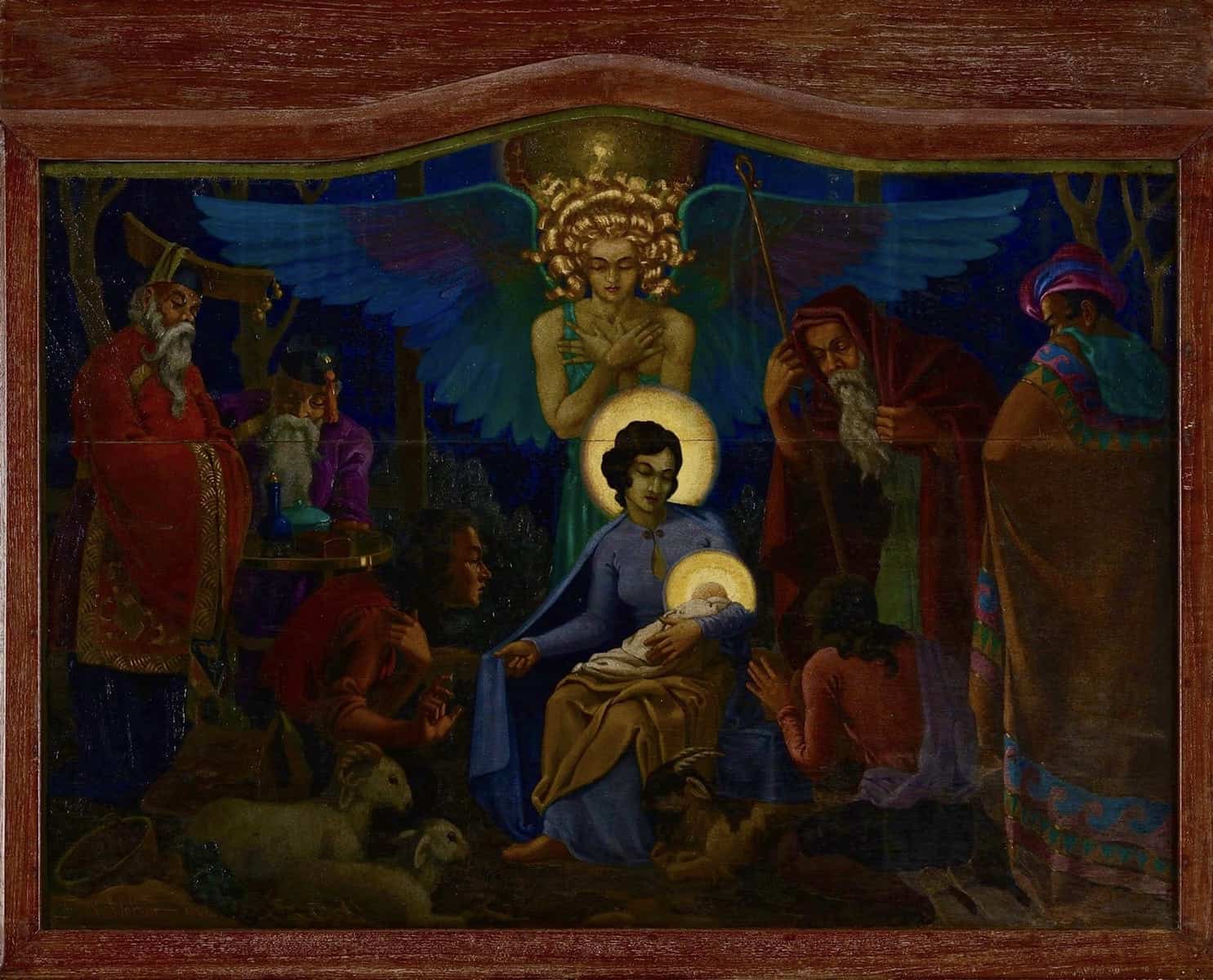Merry Christmas to all Plural readers celebrating today! In honour of this special day, we thought it apt to share an artwork which depicts a scene at the birth of the Christ Child, specifically the well-known scene where the Magi (also known as the Three Wise Men, or the Three Kings), visit and pay homage to the infant Jesus. This event, as well as the Christian feast day (celebrated in Western Christianity on 6 January), are both known as Epiphany – as is this painting, by artist Richard Walker.
As a non-Christian, this piece interested me due to its subject matter and the unusual circumstances of its creation, opening my eyes to the deeply spiritual meaning of Christmas to the people who celebrate it. Everything I know about Christmas is superficial, from the candy canes and gingerbread men to the endless sales that line the shops in December. Given the commercialisation of Christmas today, I was intrigued to learn of the origins of Richard Walker’s Epiphany. Created during a time of unimaginable turmoil and suffering, it was a study for a mural created during World War II, when the Japanese occupied Singapore. In fact, Walker made the work while he was interned at Changi prison as a prisoner-of-war. Epiphany was eventually placed behind an improvised altar for communion services in Changi prison; a stark contrast to the lavish meals and expensive gifts that epitomise the celebration of this festive season today.

Richard Walker came to Singapore in 1923 as a British art educator and administrator. Watercolour was the key medium taught in the art classes of the British colonial school system at the time and Walker taught it to interested teachers and students at Raffles Institution. Though many Singapore pioneer artists studied with and were influenced by migrant artists from China, the colonial school system, particularly its courses in watercolour, was also a significant influence on early Singapore artists. Notably, Walker taught the eminent Singapore watercolourist Lim Cheng Hoe, who was one of the founders of the Singapore Watercolour Society.

As an artist, Walker, who had previously studied mural painting at the Royal College of Art, painted local scenery in a precise and naturalistic manner, consistent with the muralist tradition. The work Epiphany, however, depicts a scene that is iconographic in art history, commonly referred to as The Adoration of the Magi. The earliest known depiction of The Adoration of the Magi can be found on a fresco in the Priscilla Catacomb of Rome and dates back to the 2nd century. Throughout Western art history, particularly in the Renaissance and Baroque periods, The Adoration of Magi was a favoured subject – Peter Paul Rubens, for example, is known for at least four notable versions, which now hang in museums in Lyon, Madrid, Antwerp and Cambridge respectively. Many other well-known artists, including Bosch, Bruguel, da Vinci, Durer and Velazquez have also painted this iconographic scene.

In Richard Walker’s version, Epiphany is most notable for its portrayal of the Virgin Mary as an Asian woman. Several of the other figures in the work also appear to be of Asian descent and one of the Magi is dressed in imperial Chinese garb. To me, Walker’s depiction of the Virgin Mary as an Asian woman is simply another indicator of the universality of Christ and religion’s ability to reach various communities. Despite the undeniable power dynamic that stems from Walker’s status as a member of the colonial elite, the depiction of a Biblical figure as non-white destablises white dominance over Christianity. At the end of the day, Epiphany is a meticulous, beautiful and unifying expression of faith that exists against all odds. Its history lends this glowing, luminous work a special poignancy.











